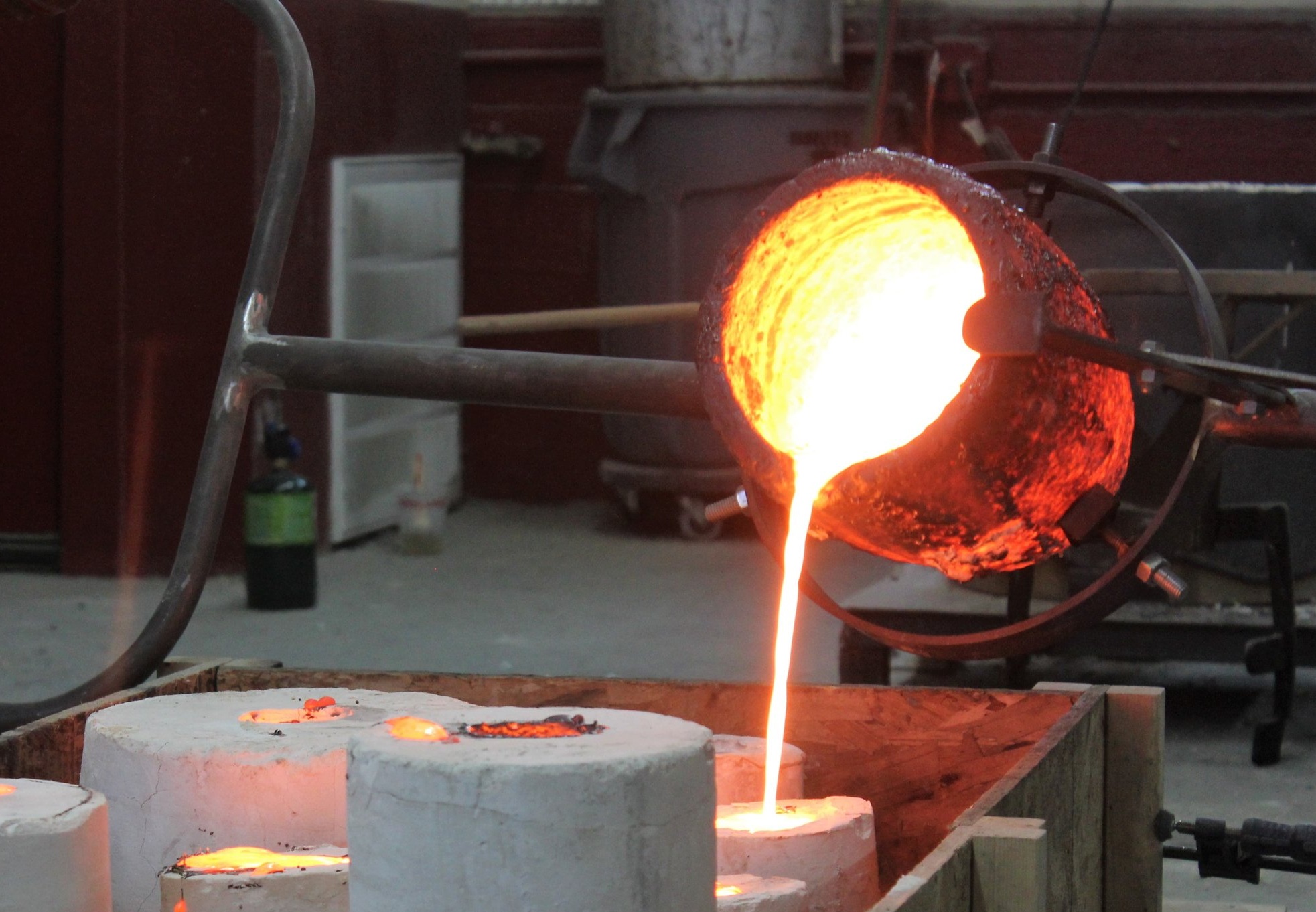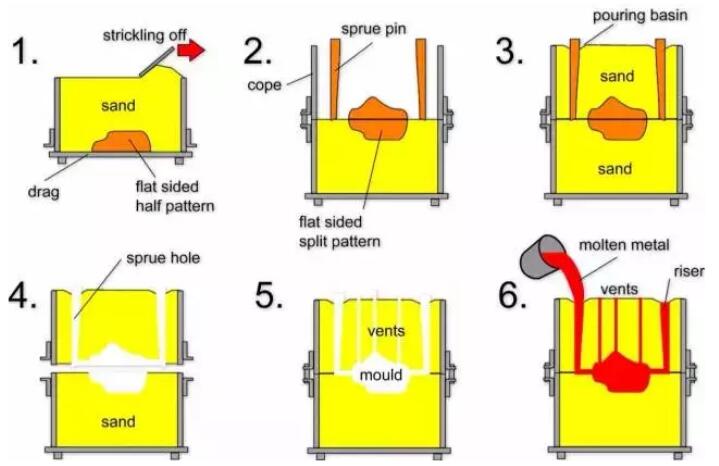Exploring innovative applications of Aluminum Castings in various fields
The Role of Metal Casting beforehand Manufacturing Technologies
Metal Casting have significantly influenced the evolution of making technologies. They use special design versatility, enabling the creation of elaborate geometries vital for different applications. Modern spreading strategies are being enhanced by advancements like 3D printing and automation. These growths not just enhance performance but likewise address challenges in accuracy and sustainability. As sectors remain to progress, the duty of Metal Casting stays vital fit their future. What lies ahead in this vibrant field?
The Evolution of Steel Casting Techniques
As the demand for precision and performance in production has actually expanded, the development of Metal Casting methods has undertaken considerable makeover. Historically, Metal Casting started with basic techniques such as sand casting and lost-wax spreading, which enabled artisans to produce intricate forms. Gradually, innovations in modern technology presented procedures like die casting and financial investment spreading, improving precision and lowering waste. Wisconsin Aluminum Foundry. The introduction of computer-aided layout (CAD) and simulation software reinvented the drawing board, enabling producers to prepare for prospective concerns and enhance layouts before production. In addition, the growth of brand-new products, such as sophisticated alloys and compounds, has actually widened the range of applications for Metal Casting. Automation and robotics have additional polished casting procedures, enhancing consistency and efficiency. As an outcome, the Metal Casting industry has actually adapted to fulfill the demands of contemporary production, concentrating on sustainability and innovation to remain competitive in an ever-evolving marketplace
Applications of Metal Casting in Secret Industries
The innovations in Metal Casting methods have opened a vast array of applications throughout numerous markets. In the vehicle field, Metal Casting are integral for generating engine blocks, transmission real estates, and various other vital parts that need high stamina and durability. The aerospace sector uses castings for elaborate components like turbine blades and structural components, guaranteeing light-weight yet durable options for airplane.

Furthermore, the building and construction market employs Metal Casting for structural aspects such as beam of lights and installations, adding to the honesty of buildings and infrastructure. In the energy industry, spreadings play a vital duty in making parts for wind turbines and power generation equipment, improving effectiveness and integrity. Additionally, the medical area take advantage of precision castings utilized in medical instruments and prosthetics, showing the convenience of Metal Casting across diverse applications. This wide utilization highlights the importance of Metal Casting in contemporary production techniques.
Benefits of Metal Casting in Modern Production
Metal Casting supply countless benefits that greatly improve modern-day manufacturing procedures. One vital benefit is design versatility; Metal Casting enables the creation of complicated forms and detailed geometries that are difficult or frequently difficult to achieve with other manufacturing methods. This capability makes it possible for makers to optimize product layouts for functionality and efficiency.
Additionally, Metal Casting can sustain a vast range of products, including aluminum, steel, and iron, which can be tailored to meet details mechanical residential properties and deterioration resistance needs.

Cost-effectiveness is an additional notable benefit; Metal Casting pop over here processes can produce big quantities of get rid of marginal material waste, thereby decreasing production expenses.
Moreover, the sturdiness of actors steel components contributes to the long life of products, lowering the need for constant replacements. In general, the benefits of Metal Casting significantly add to efficiency, sustainability, and innovation within modern manufacturing atmospheres.
Advancements Driving the Future of Metal Casting
While traditional Metal Casting strategies have actually offered the sector well for decades, recent innovations are positioned to revolutionize the area. Developments such as 3D printing innovation enable quick prototyping and the production of complex geometries that were previously unattainable. These innovations not only boost style adaptability however also reduce waste and shorten preparations. On top of that, the integration of automation and robotics in casting processes is streamlining operations, enhancing accuracy, and enhancing worker safety and security. Furthermore, the growth of new alloys and composite materials is allowing the development of stronger, lighter castings customized for certain applications. Digital innovations, including man-made intelligence and machine understanding, are maximizing casting specifications and anticipating maintenance, driving better quality assurance. Jointly, these advancements are pushing the limits of Metal Casting, promoting greater efficiency and sustainability in production, and placing the sector for future development and competitiveness.
Difficulties and Solutions in Metal Casting Processes
As advancements in Metal Casting modern use this link technology proceed to improve the market, various challenges remain that manufacturers must address to totally leverage these innovations. One substantial issue is the variability in product residential properties, which can bring about irregular high quality and performance. This irregularity frequently results from fluctuations in raw materials and processing problems. In addition, the rising costs of energy and products present financial constraints, pushing manufacturers to seek much more reliable procedures.
To fight these challenges, business are significantly taking on automated systems and advanced simulation methods to boost accuracy and consistency. Applying quality assurance steps throughout the manufacturing process also helps in spotting issues early. Moreover, buying research for different products may boost and lower costs sustainability. By dealing with these obstacles with innovative options, the Metal Casting industry can enhance performance and keep competitiveness in the evolving production landscape.
Often Asked Inquiries
What Materials Are Frequently Used in Steel Casting Processes?
Usual materials made use of in Metal Casting processes consist of aluminum, magnesium, bronze, and iron. Each product possesses one-of-a-kind properties that accommodate different applications, improving the convenience and functionality of the last actors products in various sectors.
How Do Environmental Laws Influence Metal Casting Procedures?
Ecological guidelines urge Metal Casting operations to embrace cleaner techniques and innovations, often enhancing production expenses. Conformity may lead to cutting-edge procedures that minimize waste and exhausts, inevitably promoting sustainability within the Metal Casting sector.
What Are the Safety And Security Procedures in Metal Casting Facilities?
Safety procedures in Metal Casting centers include correct air flow, go to my site individual protective equipment, regular safety and security training, equipment upkeep, and adherence to safety guidelines, ensuring a protected atmosphere for employees while minimizing dangers connected with harmful products and procedures.
How Is Quality Controlled in the Steel Casting Refine?
Quality assurance in Metal Casting involves rigorous examinations, consisting of visual analyses, dimensional checks, and material screening. Adherence to industry criteria and carrying out quality management systems ensures that castings meet given demands throughout the manufacturing process.
What Is the Future Job Expectation for Metal Casting Professionals?
The future work overview for Metal Casting experts appears appealing, driven by developments in innovation and increasing demand throughout different industries (Aluminum Foundry). Growth in automation and sustainable methods will likely develop brand-new opportunities in this market
Historically, Metal Casting began with straightforward techniques such as sand spreading and lost-wax casting, which permitted craftsmens to develop elaborate forms. Over time, innovations in technology presented procedures like die spreading and investment spreading, improving precision and decreasing waste. In addition, the medical area advantages from accuracy spreadings used in surgical instruments and prosthetics, showing the convenience of Metal Casting throughout diverse applications. Metal Casting offer numerous advantages that considerably enhance contemporary manufacturing procedures. Usual materials utilized in Metal Casting procedures include aluminum, bronze, iron, and magnesium.